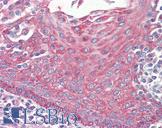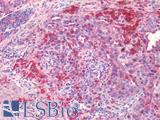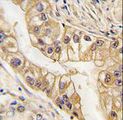Login
Registration enables users to use special features of this website, such as past
order histories, retained contact details for faster checkout, review submissions, and special promotions.
order histories, retained contact details for faster checkout, review submissions, and special promotions.
Forgot password?
Registration enables users to use special features of this website, such as past
order histories, retained contact details for faster checkout, review submissions, and special promotions.
order histories, retained contact details for faster checkout, review submissions, and special promotions.
Quick Order
Products
Antibodies
ELISA and Assay Kits
Research Areas
Infectious Disease
Resources
Purchasing
Reference Material
Contact Us
Location
Corporate Headquarters
Vector Laboratories, Inc.
6737 Mowry Ave
Newark, CA 94560
United States
Telephone Numbers
Customer Service: (800) 227-6666 / (650) 697-3600
Contact Us
Additional Contact Details
Login
Registration enables users to use special features of this website, such as past
order histories, retained contact details for faster checkout, review submissions, and special promotions.
order histories, retained contact details for faster checkout, review submissions, and special promotions.
Forgot password?
Registration enables users to use special features of this website, such as past
order histories, retained contact details for faster checkout, review submissions, and special promotions.
order histories, retained contact details for faster checkout, review submissions, and special promotions.
Quick Order
| Catalog Number | Size | Price |
|---|---|---|
| LS-C498801-50 | 50 µg | $294 |
| LS-C498801-100 | 100 µg | $360 |
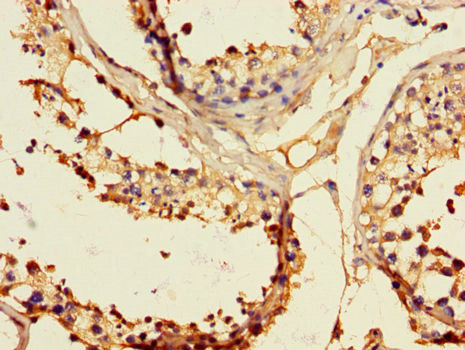
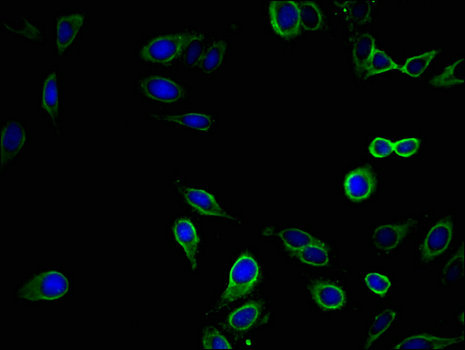


1 of 2
2 of 2
Polyclonal Rabbit anti‑Human EPHB2 / EPH Receptor B2 Antibody (IHC, IF) LS‑C498801
Polyclonal Rabbit anti‑Human EPHB2 / EPH Receptor B2 Antibody (IHC, IF) LS‑C498801
Toll Free North America
 (800) 227-6666
(800) 227-6666
For Research Use Only
Overview
Specifications
Description
EPH Receptor B2 antibody LS-C498801 is an unconjugated rabbit polyclonal antibody to human EPH Receptor B2 (EPHB2). Validated for ELISA, IF and IHC.
Target
Human EPHB2 / EPH Receptor B2
Synonyms
EPHB2 | CAPB | Cek5 | EK5 | ETECK | EPH tyrosine kinase 3 | DRT | ELK-related tyrosine kinase | Hek5 | EPH-like kinase 5 | EPHT3 | Nuk | PCBC | Tyrosine-protein kinase TYRO5 | Protein-tyrosine kinase HEK5 | Tyro5 | EPH receptor B2 | Ephrin type-B receptor 2 | EPTH3
Host
Rabbit
Reactivity
Human
(tested or 100% immunogen sequence identity)
Clonality
IgG
Polyclonal
Purification
Protein G purified
Modifications
Unmodified
Immunogen
Recombinant human Ephrin type-B receptor 2 protein (261-465AA)
Specificity
Receptor tyrosine kinase which binds promiscuously transmembrane ephrin-B family ligands residing on adjacent cells, leading to contact-dependent bidirectional signaling into neighboring cells. The signaling pathway downstream of the receptor is referred to as forward signaling while the signaling pathway downstream of the ephrin ligand is referred to as reverse signaling. Functions in axon guidance during development. Involved in the guidance of commissural axons, that form a major interhemispheric connection between the 2 temporal lobes of the cerebral cortex. Also involved in guidance of contralateral inner ear efferent growth cones at the midline and of retinal ganglion cell axons to the optic disk. In addition to axon guidance, also regulates dendritic spines development and maturation and stimulates the formation of excitatory synapses. Upon activation by EFNB1, abolishes the ARHGEF15-mediated negative regulation on excitatory synapse formation. Controls other aspects of development including angiogenesis, palate development and in inner ear development through regulation of endolymph production. Forward and reverse signaling through the EFNB2/EPHB2 complex regulate movement and adhesion of cells that tubularize the urethra and septate the cloaca. May function as a tumor suppressor.
Applications
- IHC
- Immunofluorescence
- ELISA
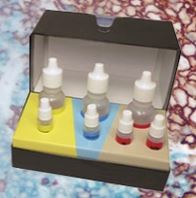
|
Performing IHC? See our complete line of Immunohistochemistry Reagents including antigen retrieval solutions, blocking agents
ABC Detection Kits and polymers, biotinylated secondary antibodies, substrates and more.
|
Presentation
PBS, pH 7.4, 0.03% Proclin 300, 50% glycerol.
Storage
Short term: -20°C; Long term: -80°C; Avoid freeze-thaw cycles.
Restrictions
For research use only. Intended for use by laboratory professionals.
About EPHB2 / EPH Receptor B2
Publications (0)
Customer Reviews (0)
Featured Products
Species:
Human, Mouse
Applications:
Western blot, Immunoprecipitation, ELISA
Species:
Human
Applications:
IHC, IHC - Paraffin, Immunofluorescence, Western blot, ELISA
Species:
Human, Monkey, Mouse, Rat, Rabbit, Zebrafish
Applications:
IHC, IHC - Paraffin
Species:
Human
Applications:
IHC, IHC - Paraffin, Western blot, Flow Cytometry
Species:
Mouse, Human
Applications:
Flow Cytometry
Species:
Human, Mouse
Applications:
IHC, IHC - Paraffin
Request SDS/MSDS
To request an SDS/MSDS form for this product, please contact our Technical Support department at:
Technical.Support@LSBio.com
Requested From: United States
Date Requested: 11/22/2024
Date Requested: 11/22/2024

